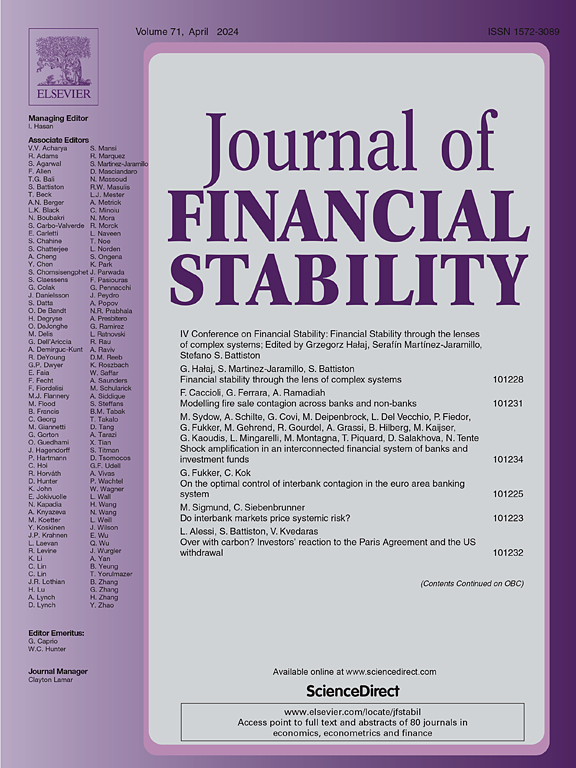The origin of financial instability and systemic risk: Do bank business models matter?
IF 6.1
2区 经济学
Q1 BUSINESS, FINANCE
引用次数: 0
Abstract
Using a large sample of European listed banks, we investigate the relationship between a bank’s business model and systemic risk between 2005 and 2020, a period which includes various episodes of instability. Our findings indicate that, during tranquil periods, banks with different business models exhibit similar sensitivity to systemic risk. However, during periods of instability, the type of business model becomes critical: investment banks contribute more to and are more exposed to systemic risk. Distinguishing between endogenous and exogenous crises, our results reveal that market-oriented banks contribute more to systemic risk when instability is endogenous to the financial sector. Conversely, focused retail banks consistently show lower contributions and exposures to systemic risk. Additionally, our findings highlight the importance of business model migrations in reducing systemic risk. Banks transitioning from diversified to more retail-oriented models reduce their systemic risk, whereas migrations in the opposite direction do not exhibit the same benefit. These findings underscore the importance of maintaining diverse business models in the banking sector to enhance financial stability.
金融不稳定和系统性风险的起源:银行业务模式重要吗?
本文以欧洲上市银行为大样本,研究了2005年至2020年间银行业务模式与系统性风险之间的关系,这一时期包括各种不稳定事件。我们的研究结果表明,在平静时期,不同商业模式的银行对系统性风险表现出相似的敏感性。然而,在不稳定时期,商业模式的类型变得至关重要:投资银行对系统性风险的贡献更大,也更容易受到系统性风险的影响。通过区分内生危机和外生危机,我们的研究结果表明,当金融部门的不稳定性是内生的时,以市场为导向的银行对系统性风险的贡献更大。相反,专注的零售银行对系统性风险的贡献和敞口一直较低。此外,我们的发现强调了业务模型迁移在降低系统风险中的重要性。银行从多元化模式过渡到更以零售为导向的模式,降低了它们的系统性风险,而相反方向的迁移则没有表现出同样的好处。这些发现强调了在银行业保持多样化商业模式对加强金融稳定的重要性。
本文章由计算机程序翻译,如有差异,请以英文原文为准。
求助全文
约1分钟内获得全文
求助全文
来源期刊

Journal of Financial Stability
Multiple-
CiteScore
7.70
自引率
9.30%
发文量
78
审稿时长
34 days
期刊介绍:
The Journal of Financial Stability provides an international forum for rigorous theoretical and empirical macro and micro economic and financial analysis of the causes, management, resolution and preventions of financial crises, including banking, securities market, payments and currency crises. The primary focus is on applied research that would be useful in affecting public policy with respect to financial stability. Thus, the Journal seeks to promote interaction among researchers, policy-makers and practitioners to identify potential risks to financial stability and develop means for preventing, mitigating or managing these risks both within and across countries.
 求助内容:
求助内容: 应助结果提醒方式:
应助结果提醒方式:


